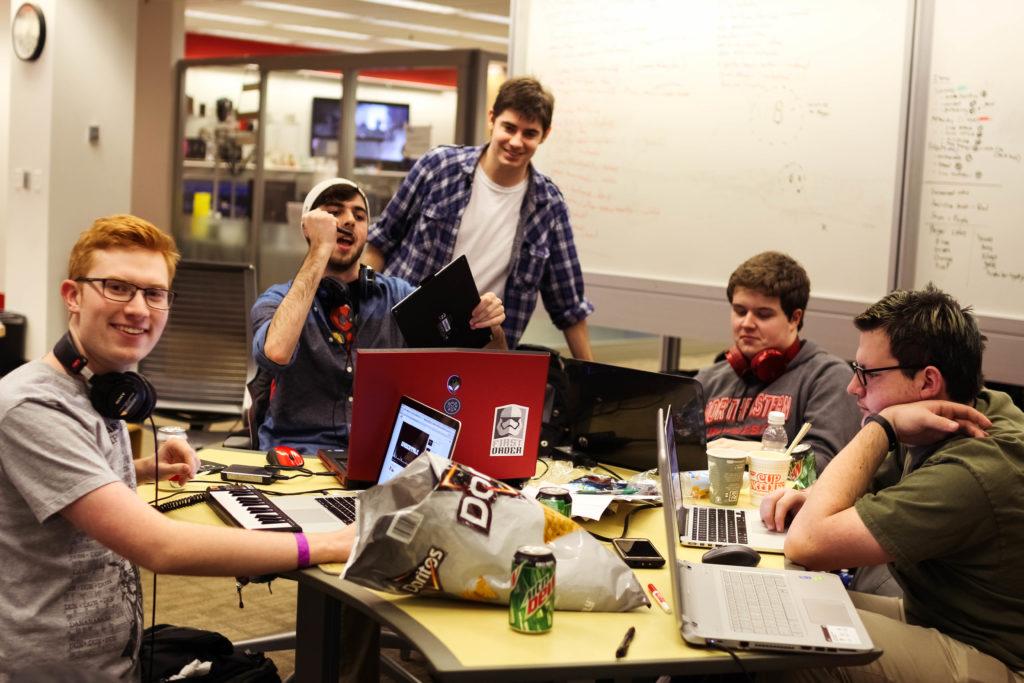By Sahan Weerakoon, deputy inside editor
Forty-eight hours of nonstop design, a random theme and copious amounts of snacks were what first-time participants expected of the 2016 Global Game Jam (GGJ). In reality, they brainstormed how to get digital salmon to a mating pool and how to make aliens practice human morning routines.
Unlike a hackathon, which features programmers collaborating to make software, GGJ brings together 2-D artists, 3-D artists, programmers and musicians who create a game within 48 hours.
Every year, a new theme is announced at each location prior to the start of the event. This way, over 36,000 participants – or “jammers,” as they prefer to be called – are force- to improvise.
According to the GGJ website, this year’s theme was rituals, and with almost 6,800 games made, jammers squeezed out every variation of the word – from morning to sacrificial and mating rituals.
“[Jammers] brainstormed, pitched ideas and broke into smaller groups of 3 to 7, based on who wants to work on what pitch,” Nik Bear Brown, organizer and Northeastern lecturer of computer science, said.
Brown noted that it was difficult to go back on a pitch with such a small time frame. Despite this challenge, many jammers agreed that neither the time frame nor the random grouping was a hassle.
Anna Newcomb, a 3-D artist and sophomore animation major at Massachusetts College of Art and Design, found her group to be efficient.
“Everyone clicked and just sort of ended up together,” Newcomb said. “I like being able to meet people and working with others to solve problems; you learn a lot in 48 hours.”
Newcomb’s group also included a sound editor, two writers, a 2-D artist and two programmers. Their game, “Salmon Upstream,” has the player take control of a salmon that needs to collect items and swim against a current in order to reach a mating pool.
For Cal Brockie, a senior contemporary writing and production major at Berklee College of Music, GGJ provided some challenges. He usually produces music for games at the very end of the process, but as the sound editor for “Salmon Upstream,” Brockie had to edit music as the story and game were being developed.
“You have to experiment and go outside your comfort zone with whatever you work on,” he said.
Many groups did go outside the box, like with the virtual reality (VR) game “Human Morning Ritual Simulator.” In this game, players put on their VR head-mount and take the place of an alien practicing a human’s normal morning ritual so that it can infiltrate Earth.
Despite the complexity of VR, the group agreed that creating the game was less difficult than they thought.
“With Unity [game engine], it makes it easy to put in scripts for the game,” Charity Everett, a junior and digital media major at Harvard Extension School, said.
Founded in 2008 by Northeastern game design professor Susan Gold and game designers Gorm Lai and Ian Schreiber, GGJ has grown into the world’s largest game-creation event with 632 locations in 93 countries in January 2016. The opening of the Digital Media Commons (DMC) in Snell Library allowed Gold to bring the event to Northeastern for the first time in 2013.
GGJ offered jammers of all backgrounds an opportunity to participate. Everett’s group, for example, featured both a law student and a health informatics student.
“Even those without experience can use Global Game Jam as an outlet,” Tien Dao, a second-year health informatics graduate student at Northeastern, said.
For Dao and most other jammers, this outlet to share their love for gaming and creating interactive worlds was much more valuable than a competition or a prize. The organizers admitted that the real rewards from GGJ were the networks and friendships forged from 48 hours of continuous collaboration.
“The best experience here is interacting with each other. The event is about communicating, meeting and interacting with people,” Brown said. “[GGJ organizers] just facilitate the space and [provide] some snacks.”
Photo by Nola Chang









